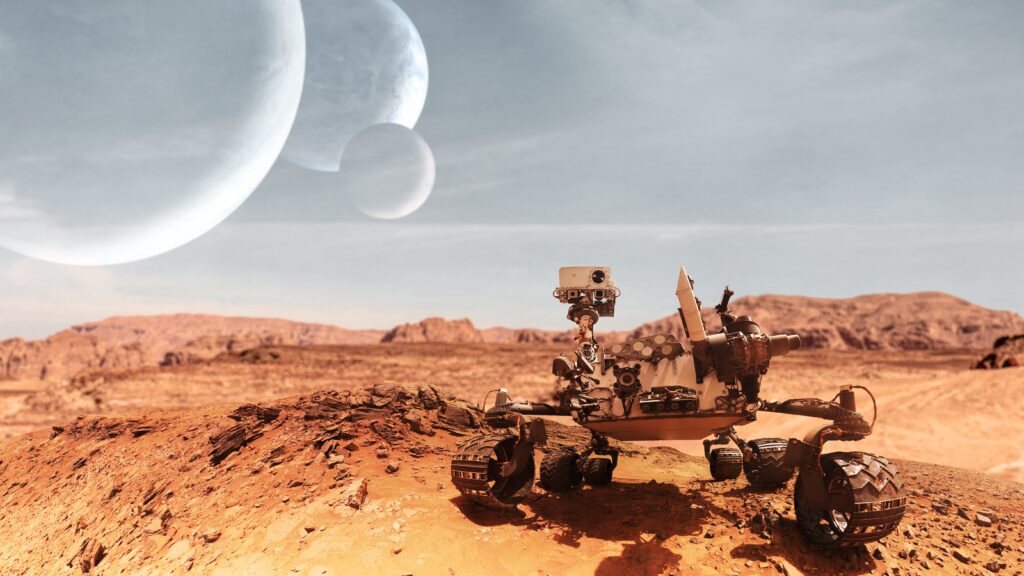In 2028, the Rosalind Franklin rover will begin its journey to Mars. By 2030, it will land on the Red Planet, aiming to uncover signs of ancient life. The mission promises to be a significant milestone in space exploration, with global implications for science and technology.
Airbus Plays a Key Role in Building the Rover
Airbus, a leading aerospace company based in Stevenage, UK, will play a critical role in the mission. The company will be responsible for constructing the rover’s landing platform under a £150 million contract from the European Space Agency (ESA). This project is funded by the UK government through the UK Space Agency. Airbus has also built the rover itself, making them an essential partner in the mission.
Initially, the project was a joint effort with Russia. However, following the onset of the Ukraine war, the ESA restructured the mission. New partners were brought in, including NASA, which will provide the launch vehicle and the rover’s heating systems. This restructuring ensures that the mission will continue despite changing geopolitical circumstances.
Designing a Complex Landing System
One of the most challenging aspects of the mission is ensuring that the rover lands safely on Mars. The landing platform will be equipped with a capsule that includes parachutes, a heat shield, and powerful thrusters. According to project manager Caroline Rodier, the capsule is similar to a “Kinder Egg,” offering layers of protection to the rover as it descends to the Martian surface.
The parachutes will help slow the descent, while the heat shield will protect the rover from the intense heat of re-entry into the Martian atmosphere. The thrusters will fine-tune the descent, reducing the speed to under three meters per second before landing. These complex systems will work in unison to ensure the rover’s safety.
Rover’s New Design Features
Airbus engineers are also developing landing legs and twin ramps to help the rover exit the platform once it touches down. The rover will need to deploy the ramps smoothly and efficiently to begin its exploration of the Martian surface. Additionally, the rover’s software has received crucial updates to accommodate the new timeline for the mission. These changes ensure the rover remains functional throughout its journey, despite the adjustments made after the initial plan.
Searching for Signs of Life
The primary goal of the Rosalind Franklin rover is to search for signs of ancient life beneath the surface of Mars. For years, scientists have speculated that Mars may have supported microbial life in its distant past. The rover will dig deep into the Martian soil to explore potential habitats where life could have existed.
Scientists believe that the best chance of finding life lies beneath the planet’s surface, where conditions may have been more stable in the past. The rover is equipped with state-of-the-art tools to analyze soil samples and search for organic compounds that could indicate life. The results could have profound implications for our understanding of life in the universe and whether Earth is unique in supporting life.
The Mission’s Global Impact
The mission to Mars holds tremendous scientific potential, not only for understanding the history of Mars but also for inspiring future technologies on Earth. Paul Bate from the UK Space Agency emphasized the global impact of the mission, noting that the discoveries could pave the way for future space exploration.
The data gathered by the Rosalind Franklin rover will also benefit future missions to the Red Planet. By understanding the Martian environment better, scientists can develop new technologies for exploring Mars more effectively and possibly even planning for human missions in the future.
The mission also highlights international collaboration in space exploration. The partnership between the UK, the European Space Agency, and NASA demonstrates how countries can work together to achieve ambitious goals. The success of the Rosalind Franklin rover could serve as a model for future space missions and demonstrate the power of global cooperation.
The Road Ahead: A Long Journey
As the Rosalind Franklin rover prepares for its 2028 launch, there are still several hurdles to overcome. Engineers will continue refining the rover’s systems, ensuring that everything is ready for its mission. The rover will face a harsh environment on Mars, with extreme temperatures, radiation, and dust storms. Despite these challenges, the mission holds immense promise for advancing our understanding of the universe.
In 2030, when the rover lands on Mars, it will be the culmination of years of planning, research, and collaboration. The search for signs of ancient life will begin in earnest, and the discoveries made by the rover could change our perspective on life in the cosmos.
The Rosalind Franklin mission is more than just a scientific endeavor. It represents humanity’s continued drive to explore the unknown and expand our knowledge of space. Whether or not signs of life are found, the mission will contribute valuable information that will shape the future of space exploration.


